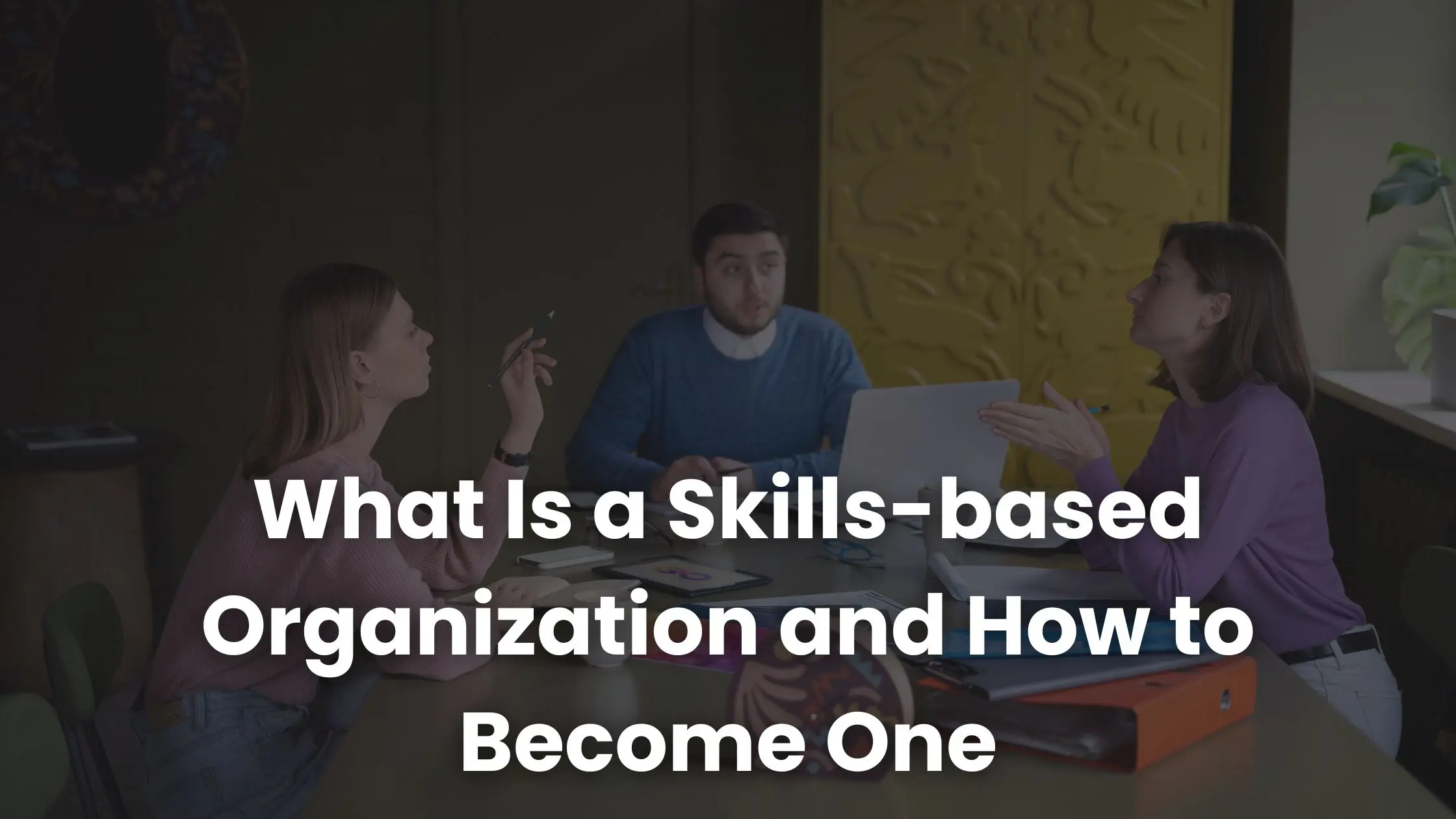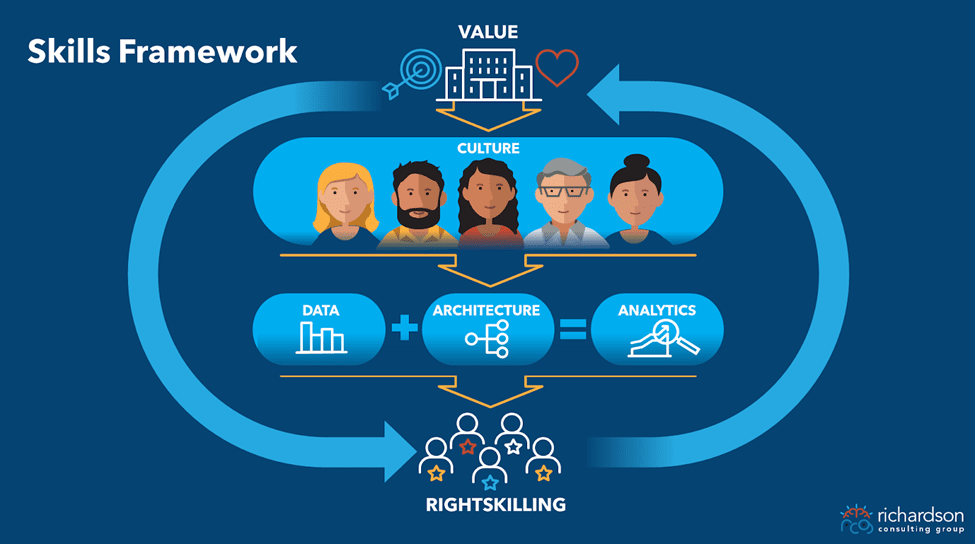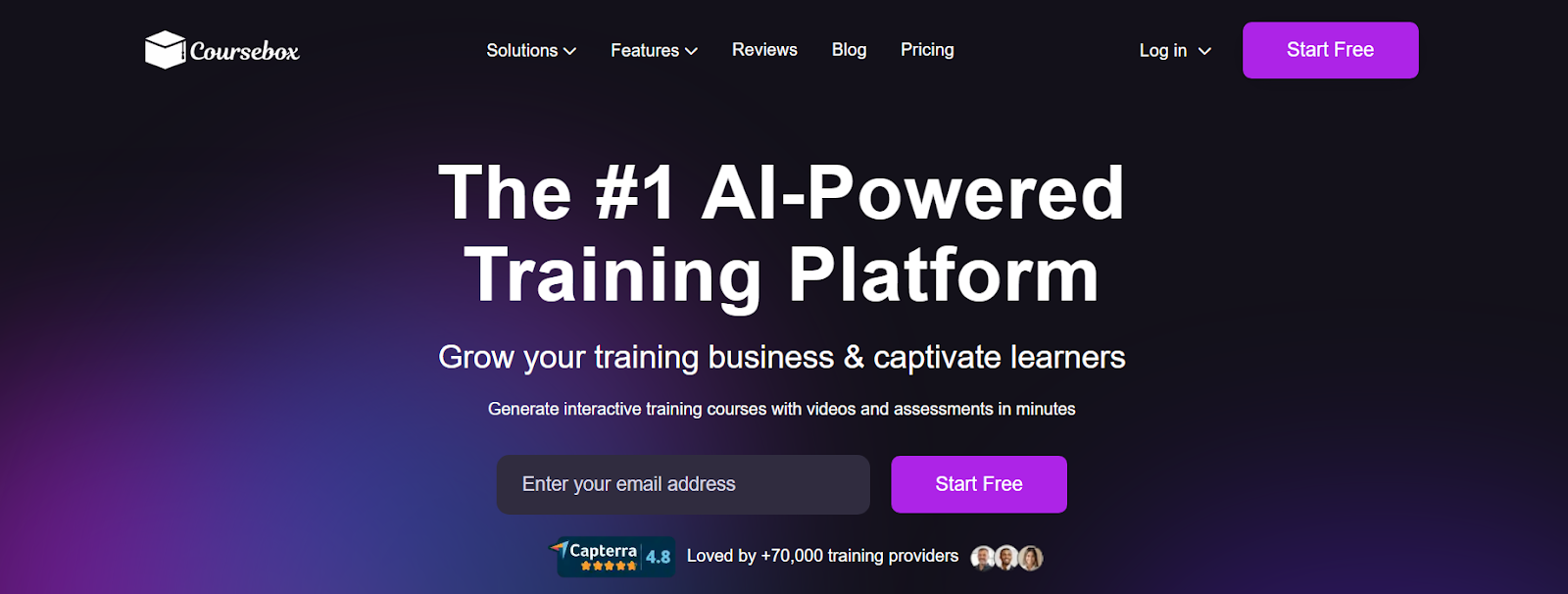What Is a Skills-based Organization and How to Become One
What is a skills-based organization? Read now to learn how to make your company one and utilize your workforce’s capabilities for long-term growth and success.
What is a skills-based organization? Read now to learn how to make your company one and utilize your workforce’s capabilities for long-term growth and success.

Over the past few years, the focus of hiring agencies and departments has shifted from prioritizing talent and skills over academic qualifications. In fact, 76% of employers agree that looking for candidates with the right skills is more important than finding those with an extensive list of degrees and experiences.
With this strategy, the roles become more flexible. Skilled individuals are assessed based on what they can do and what results they achieve, not just by their fixed job descriptions.
What is this change, and how important is it to become a skills-based organization? Let’s explore in this post.

A skills-based organization, or SBO, structures its workflows, workforce, and strategies around talent and skills development. It’s less focused on credentials, job titles, or formal roles.
These organizations hire people based on skills rather than academic degrees or years of experience. People aren’t just matched to fixed job roles — their skills are assessed and aligned with where they can add the most value.
In an SBO, we break down work into projects and gigs. Employees are given opportunities according to their experiences and capabilities instead of getting burdened with tasks they don’t understand or like.
Employees are encouraged to use their skills across the organization whenever and wherever needed. This approach maximizes productivity and enables the organizations to respond to change in real time and allocate talent where needed quickly.

Most skills-based organizations exhibit the following key traits that make them stand out from traditional workplace setups.
In a skills-based organization, skills are central to the culture. The employees are encouraged to acquire new skills and participate in skill development workshops, projects, and other gigs. The workplace becomes a facilitator to their growth rather than restraining them to their job roles.
This approach creates a culture of continuous learning and also unlocks the organization’s hidden potential. You will see talent in the most unexpected of places and will be able to work with a motivated, innovative, and engaged workforce.
Another key trait of skills-based organizations is their use of AI and advanced tools to manage skill data. They continuously monitor employees’ proficiency levels and map them to the ever-evolving job requirements using technology.
This creates a central, dynamic source of workforce capabilities that leaders can easily access. They can then assess strengths, identify skill gaps, and make informed decisions. As a result, talent deployment becomes quicker, more strategic, and aligned with the real-time business needs.
Skills-based organizations adopt flatter, more agile structures where individuals are chosen for projects based on their capabilities rather than their hierarchical positions.
They work together with cross-functional collaboration. Employees at all levels, from entry-level to the top leadership roles, are empowered to take on new projects and responsibilities.
When the team is given this flexibility, they become more engaged and contribute meaningfully to the organization’s ROI.
Another quality of skills-based organizations is that they continuously change. They have to meet the challenges of the future and present.
So the employees are not confined or restricted to certain roles but are continuously encouraged to acquire new skills. Most organizations rely on AI tools to allocate employees while keeping them open to opportunities based on their competency levels.
Coursebox can support SBOs with its AI-powered tools to track employee skills, recommend personalized learning paths, and align workforce capabilities with evolving business needs. So the employees continuously develop relevant skills and are matched to the right opportunities.
Skills-based organizations don’t just encourage skill growth; they also embed continuous learning into their operations. Their talent development strategies are adaptive and data-driven. They use real-time insights to identify emerging skill needs and personalize the individuals' learning paths.
This ensures every employee is equipped with relevant, future-proof skills that address evolving business challenges and market demands.
By fostering a culture of ongoing development, these organizations boost individual career growth. At the same time, they also create a resilient workforce that drives innovation and gives them a sustained competitive advantage.

You simply become a skills-based organization overnight. The process requires a change of culture, technology, and even SOPs to make the transition.
Here is a step-by-step approach to becoming one:
The first thing you need to do is to ensure that everyone in the organization is on the same page. Skills have a different meaning for different people and in different scenarios.
So think about the skills you are looking for. Does your organization need technical skills, like coding, problem-solving skills, or time management skills?
What do skills mean for your organization? Cover both kinds of skills needed for talent acquisition and for the tasks that need to get done. The better you lay out the definition, the stronger your foundation to build a skills-based organization.
Think about why you are going through the hassle of shifting to a skills-based organization. You not only have to understand the logic behind it, but also have to communicate the reason to all your stakeholders.
Be prepared to answer questions like: What business problems will the transition help resolve?
Will you end up hiring better talent this way and upskilling your workforce faster, or not? When you have the answers ready, people are more likely to agree to the change and see how this new approach will help solve their challenges.
When you gain their trust, you will be better able to direct them towards the business goals.
Break down each job into smaller tasks or activities. Make a detailed process chart for each task that is to be done. Then decide which skills you need for each task.
Use technology to your advantage and design training programs for your team to help them acquire specific skills. An LMS platform like Coursebox allows you to use an assisted course builder to connect learning to life skills. So, the training program becomes more personalized, and it becomes easier for individuals to develop the right skills.

Next, you need to determine which skills you need and how critical they are for the organization. You also need to know how hard some skills are to acquire or find.
Divide the skills under three headers: criticality, scarcity, and volume. In criticality, you will place the important skills for your core business. In scarcity, you will note the hard-to-find or expensive skills.
Under volume, you will note how many people you need to have a particular skill.
Before you set out to hire or train employees, check the kind of talent that already exists in your organization. How many people are readily accessible? Look at your current workforce and see what kind of skills you already have.
Skills mapping can be easily done by surveys, manager input, performance data, and integrated tools.
In the last stage, the focus shifts to actively making the skills-based thinking part of your HR infrastructure and managing the change throughout the organization..
Development and talent strategies are tweaked to focus on building in-demand skills rather than training for static roles. All through the transition, employees need guidance to build their own visible, transparent, and accessible skills portfolios.
Transparency plays a key role here. Employees must be allowed to own and update their profiles while understanding how their skills map to internal opportunities and gaps.
When you transition to a skill-based organization, you shift not just the abilities but also the mindset of the organization.
However, to make the transition smooth, make sure you provide them ample time to learn and support them in their journey.
Skills-based organizations work differently from the traditional job models. There are a number of benefits to having a skills-based organization structure, which is also why they are becoming increasingly popular.
Skills-based organizations operate on the principle of supply and demand. Instead of being bound by rigid job roles or traditional hiring models, they focus on matching real-time business needs with people’s capabilities.
For businesses, this means faster access to the right talent. For employees, it opens up greater mobility and job options.
To ensure the employees' skills are being employed to the maximum, they are relocated across different jobs and functions. This way, the organization can unlock the team's productivity levels and encourage them to contribute to different projects without confining them to job roles or departments.
The business world is driven by change. Since the economy and business environment are constantly evolving, your organizational needs and goals keep changing and differ from one day to the next. Since SBOs can quickly relocate talent as and when needed, they are better able to keep up with such a fast-moving business environment.
Since skills become central to recruiting individuals, the SBOs have a talent pool that is already prepared to meet the workforce requirements. They have a healthy mix of individuals coming in from different backgrounds, academic qualifications, and skills that make them a rather enviable talent pool.
Skills-based organizations have a redefining strategy to grow. It is the way to move forward and strive in the increasingly competitive business sphere.
So, what is a skills-based organization? It has individual competencies at its core. The better an organization can value and align them to the goal, the better it can tackle the challenges of the modern workspace.
With extensive skills at hand, your workplace becomes adaptable to change, and you get an empowered team to stand the tests of time and move forward.
Get started for free today.
